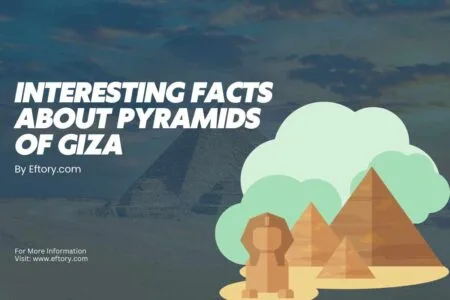Mesopotamia (Region in Iraq), is often referred to as the “Cradle of Civilization,” and consists of some archaeological sites that can give a historical insight into the oldest and most distinctive societies of world history.
Five Historical Sites in Mesopotamia:
1) Ur:
Ur was one of the five large Sumerian city-states in the ancient Near East that existed around 2100 BCE. It is most famous for the ziggurat of Ur, a large step pyramid, built for the moon god Nanna.
Location:
Ur is located about sixteen kilometers or ten miles away from the modern city of Nasiriyah in Southern Iraq.
Cultural Significance of Ur:
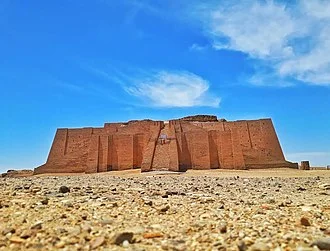
Ur has been known to be one of the great artistic centers of ancient Mesopotamia and therefore has a rich cultural value. It was considered an important religious city, especially for the construction of the Ziggurat of Ur which honors the moon god Nanna, displaying the Sumerian architecture and impacting the rest of the region’s architecture and religion.
As Located on the bank of the Euphrates River, Ur was an economically powerful city that excelled in trade and exhibited excellent standards of architectural design and political status.
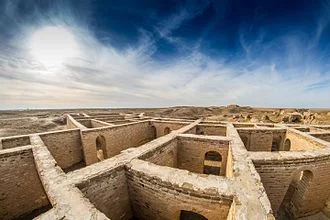
The exploration of the Royal Tombs in the 1920s uncovered items such as the Standard of Ur that helped in understanding the society stratification and death practices. This fact also contributes to its religious significance for pilgrims from Judaism, Christianity, and Islam, as Ur is considered the birthplace of Abraham. This led to several cultural changes that affected the following Mesopotamian civilizations in the areas of writing and laws, and thanks to its archeological value it offered a deeper understanding of the early urban civilizations.
2) Babylon:
Babylon was regarded as one of the primary urban centers in ancient Mesopotamia and It reached its height under Nebuchadnezzar II (605–562 BCE). It was the capital during the time of the Neo-Babylonian Empire and played a crucial role in many biblical and historical narratives. This city is famous for the Hanging Garden, which is one of the Seven Wonders of the Ancient World, and Ishtar’s Gate.
Location:
Babylon is located near the modern town of Hillah which is approximately 53 miles (85 kilometers) south of Baghdad, the capital city of Iraq.
Cultural and Mythological Impact:
Babylon was an active learning center explored by different scholars as the pioneer of mathematics, astronomical science, and literature. The city was home to scholars who wrote the Enuma Elish (a creation story) and Hammurabi’s Code, one of the earliest and most comprehensive law systems.
It was particularly famous for great buildings such as Ishtar’s Gate and the Gardens of Babylon. These architectural monuments have impacted the subsequent civilizations and were the best examples of Babylonian engineering and principles of art.
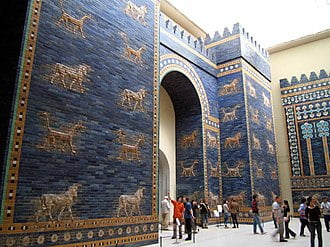
Babylon is frequently mentioned in the Bible as it represents excessive arrogance and sinful intentions, particularly in the Tower of Babel’s stories and the Israelites’ Babylonian Captivity. These narratives belong to the developments of the Western religious and cultural perception of reality.
This type of literature is shown in Mesopotamian works and is one of the oldest known. It is an epic poem that talks about themes like heroism, mortality, and the search for knowledge. These themes have influenced later storytelling.
3) Nineveh:
Nineveh was also a major city and the capital of Assyria during the reigns of Sennacherib and Ashurbanipal (the Neo-Assyrian period: 7th century BC). It was one of the most developed and populated cities in the ancient world characterized by having a great wall and palaces.
Location:
Nineveh is located close to Mosul in northern Iraq on the eastern side of the Tigris River. You can reach it via a short drive from Mosul.
Archeological Discoveries:
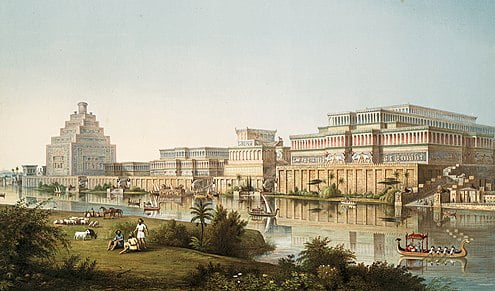
This Assyrian king’s palace had wall carvings showing scenes of battles, royal events, and everyday life. These carvings give us important information about Assyrian art and how they promoted their empire.
This library or store of clay tablets was found in the royal palace complex in Nineveh; it contained thousands of tablets inscribed with cuneiform text and included everything that Mesopotamia has known and recognized: literature, myth, science, history, and more.
The massive and intricate walls, towers, and gates like Nergal and Mashki Gates demonstrated the defensive and monumental features of Nineveh, proving its importance as the powerful capital city of the Assyrian Empire.
Luxurious ivory panels, bronze figurines, steals, and reliefs reveal the ideas and practices of the Assyrians regarding religion and other aspects of their art.
The discovery of ancient aqueducts and irrigation systems in Nineveh pointed out more facts about the advanced engineering, that ensured the reliable water supply necessary for urban and agricultural needs in ancient Mesopotamia.
4) Nimrud (Kalhu):
Nimrud is another world-famous Assyrian city that was a significant cultural and political hub from the 13th century BCE. It had been later enlarged by King Ashurnasirpal II in the 9th century BC making it the center of the empire.
Location:
Nimrud, also known as Kalhu or Calah, is an ancient Assyrian city located in northern Iraq. Nimrud is located about 19 miles (30 KM) southeast of Mosul. It can be reached by car or organized tours from Mosul.
Archaeological Treasures:
Nimrud (Kalhu) is renowned for several notable features. In northern Iraq, Ashurnasirpal II constructed the magnificent Northwest Palace renowned for elaborate bas-reliefs illustrating war, hunting, and various rituals.
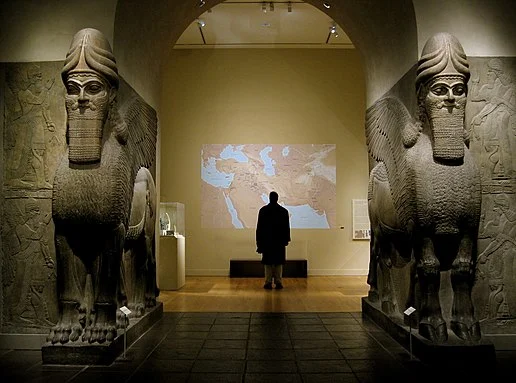
The site is also home to the Nimrud Ivories, delicate and ornate works of art which are an example of Assyrian styling. Lamassu, which are the statues of winged bulls and lions with human heads, guarded important entrances. Nimrud is well illustrated by the large military and administration center, Fort Shalmaneser.
Nabu temple reflects the religious aspect of the city, which is dedicated to the god of writing and wisdom.
Furthermore, the Burnt Palace destroyed by fire and the Royal Tombs with rich grave goods, help to understand the final days of the city and the material wealth of its inhabitants.
5) Hatra:
Hatra was a great monumental fortified city of the ancient Parthian Empire and later on a very significant religious center as well. It reached its peak in the 2nd century CE and successfully tolerated Roman attacks because it had well-built walls and a good geographical position.
Location:
It is Located in the Al-Jazira region of northern Iraq. It is approximately 68 miles southwest of Mosul. You can reach there by Car from Mosul.
Architectural Style:
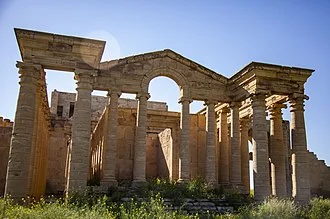
Hatra’s architectural style is a mix of Hellenistic and Parthian styles with some irrigation elements as the city was a cultural center. The city is unique with both Greek and Roman accents, Corinthian columns, and carved stones in combination with Parthian elements, Iwans, and vast, vaulted spaces open on one side.
The civilization of Hatra still has proof of Eastern and Western influence, and it had tremendous fortifications, magnificent temples, and highly developed constructions using mortar. This blend of various architectural styles proves that Hatra is an ancient settlement with a rich history and deep cultural roots.
Also Read: 9 Extraordinary Historical Vacation Sites
Best time to Visit Historical Sites in Mesopotamia:
The best time to visit historical sites in Mesopotamia is during the calmer months (October to April). During this period, the weather is more comfortable, which makes it easier to explore outdoor sites like Ur, Babylon, Nimrud, Hatra, and Nineveh. The climate is moderate, and the risk of scorching heat is less, especially if compared to the hot summer conditions. And traveling in the less crowded time can be more enjoyable than in the peak season.
Tips for Visiting Historical Sites in Mesopotamia:
You need to purchase an entry ticket to visit historical sites in Mesopotamia. Visiting these sites does not require any travel permit but, it’s advisable to check with local guides or authorities for any specific entry requirements or restrictions.
Wear light, breathable clothing & comfortable shoes.
Bring a hat, sunglasses, and sunscreen for Skin Protection.
Must carry a water bottle to stay hydrated.
Try to hire a local guide. As they are familiar with the area and can make your travel experience better while ensuring your safety. I visited these sites at the start of 2024 and also hired a local guide who provided me with the historical info of these sites that I had mentioned in this article. I also advise you to carry a pen and notebook along with you to note down such wonderful history. #learning while traveling.
Respect the historical value of the sites. Avoid touching artifacts or structures, and follow all guidelines set by local authorities or tour guides.
Books for Studying the History of Historical Sites in Mesopotamia:
“Ancient Mesopotamia: The Eden That Never Was” by Susan Wise Bauer.
“The Archaeology of Mesopotamia: Theories and Approaches” by Roger Matthews.
“Nineveh and Its Remains” by Austen Henry Layard.
“Nimrud: The Life and Death of a Mesopotamian City” by Joan Oates and David Oates.






